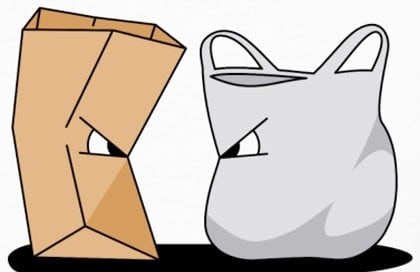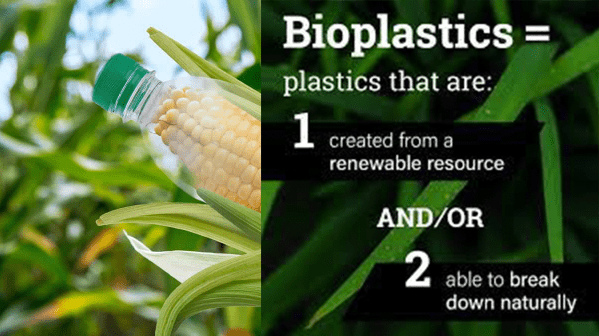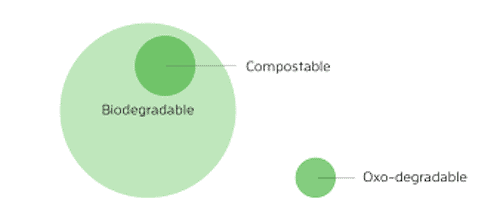Which is more environmentally friendly: paper or plastic?
Environmental Disadvantages of Each For the battle over which is greener, neither paper nor traditional plastic, have it in the bag.
When you do get to choose between paper and plastic, don’t let green guilt necessarily pull you toward paper. Consider that both materials have drawbacks for the environment.
Before you brown bag it, consider these environmental disadvantages of paper:
- Causes pollution: Paper production emits air pollution, specifically 70 percent more pollution than the production of plastic bags [source: Thompson]. According to certain studies, manufacturing paper emits 80 percent more greenhouse gases [source: Lilienfield]. And, consider that making paper uses trees that, instead, could be absorbing carbon dioxide. The paper bag making process also results in 50 times more waterpollutants than making plastic bags [source: Thompson].
- Consumes energy: Even though petroleum goes into making plastic, it turns out that making a paper bag consumes four times as much energy as making a plastic bag, meaning making paper consumes a good deal of fuel [source: reusablebags.com].
- Consumes water: The production of paper bags uses three times the amount of water it takes to make plastic bags [source: Lilienfield].
- Inefficient recycling: The process of recycling paper can be inefficient — often consuming more fuel than it would take to make a new bag [source: Milstein]. In addition, it takes about 91 percent more energy to recycle a pound of paper than a pound of plastic [source: reusablebags.com].
- Produces waste: According to some measures, paper bags generate 80 percent more solid waste [source: Lilienfield].
- Biodegrading difficulties: Surprisingly, the EPA has stated that in landfills, paper doesn’t degrade all that much faster than plastics [source: Lilienfield].
However, plastic didn’t get a bad reputation for nothing. Here are some environmental disadvantages of plastic:
- Litter: Littered plastic bags are everywhere today — blown around streets, stuck in fences and trees. And, aside from their use in the occasional art film (à la American Beauty) they can be an eyesore and a pain.
- Danger to wildlife: Plastic waste is deceptive for birds and other wildlife, who mistake it for food. And you can imagine how eating plastic messes with an animal’s intestine. As a result, animals can die of starvation [source: Spivey]. To prevent this, perhaps paper is the better choice, especially if you live on the coast, as your plastic waste is more likely to make its way to marine life and sea birds [source: Thompson].
- Long-term degrading: Light breaks plastic down so it photodegrades rather than biodegrades. Estimates say that this process can take up to 500 or even 1000 years in landfills [source: Lapidos]. Unfortunately, we don’t really know, as plastic is a relatively new invention.
- Recycling difficulties: Although for the most part, plastic takes less energy to recycle than paper, plastic bags are a frustrating recycling dilemma. The curbside recycling in many communities is not meant for plastic bags because they can screw up the plant’s machines [source: Milstein]. Instead, some stores offer bins in which to properly recycle plastic bags.
These factors have made the question of which is greener mind-boggling. The EPA has admitted that not only is the question unresolved, but it doesn’t consider the use of plastic bags a major issue [source: Spivey].
Want a better solution? Beyond Green is better than paper and stronger than plastic!




Pura Vida Bioplastics = Real Certificates USDA BIO-BASED, TUV, BNQ, GREEN AMERICA Home Compostable – Breaks down 3-4 months without Chemicals
Get a Quote